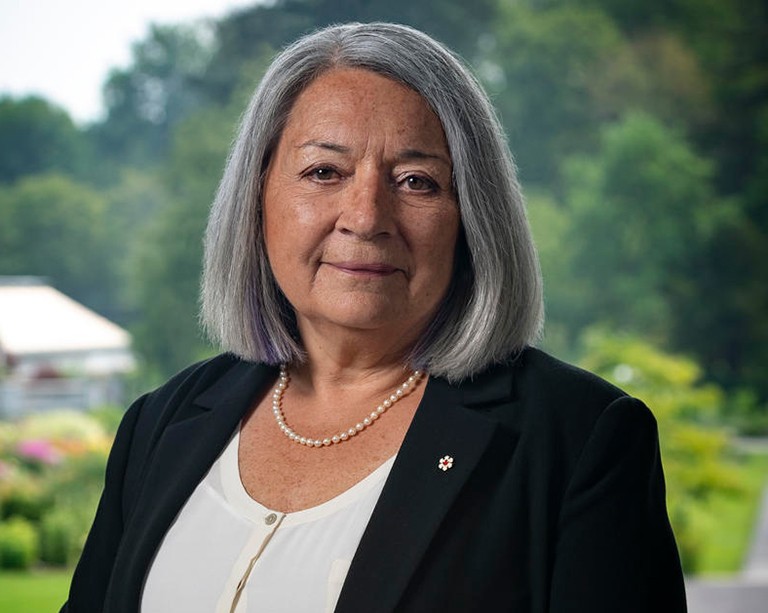‘Engaging with art can help us feel more peaceful, and more empathetic’

The voices of Concordia students can now accompany people who are touring the Michal and Renata Hornstein Pavilion for Peace at the Montreal Museum of Fine Arts (MMFA).
Under the guidance of Kathleen Vaughan, Concordia Research Chair in Socially Engaged Art and Public Pedagogies, graduate students in the Department of Art Education have created two audio walks to complement the new collections.
“The aim of our audio guides is to suggest that engaging with art can help us feel not just more peaceful, but also more empathetic and aware of others’ needs. Perhaps even more willing to consider what each of us can do to promote peace in the world,” Vaughan said.
Available in both English and French, the hour-long audio walks contextualize the exhibition pieces, emphasizing their relation to peace. They were officially launched on November 28 in the Michal and Renata Hornstein Pavilion for Peace.
Concordia’s president Alan Shepard and Nathalie Bondil, director general and chief curator of the MMFA both spoke at the event. They recognized the hard work that went into creating the guides.
“The new Peace Walks create a space for reflection on themes that have been at Concordia’s core since its founding institutions — peace and social justice,” said Shepard. “In the process, the walks help us do what art does best: consider these art works and, therefore, the broader world — from different perspectives.”
They also emphasized the close relationship between the two Montreal institutions.
“Our brand new Pavilion for Peace for International Art, Education and Art Therapy is a place for reflection and sharing,” said Bondil.
“Thanks to the teams at both institutions, this inspiring audio guide delivers a timely message, from yesterday to today.”
The audio walks were made available to attendees for download on their cellphones, and are now available at re-imagine.ca, Vaughan’s website. They will also soon be available on the museum’s website.
‘An opportunity to add to a visitors’ experience of the Museum’
Vaughan said that the guides are the result of two years’ worth of research, scripting, narration and translation.
“The initiative’s project-based approach — as well as this opportunity to add to a visitors’ experience of the Museum — spurred our students to creative and collaborative heights,” says Vaughan.
“The integration of teaching, learning and making with the museum and its exceptional collection gave them meaningful real-world experience. It was a lot of work, but we were all very invested in the project.”
Thirty collaborators worked under the supervision of Vaughan, with major contributions by Philip Lichti, the digital media and lab coordinator at Concordia’s Centre for Oral History and Digital Storytelling, who acted as story consultant, mixer and sound engineer.
Each guide features original music and sound effects. There are student narrators and special guest voices, including those of retired lieutenant-general and peace activist Roméo Dallaire and Syrian immigrant George Arbaji.
About the walks
The two audio walks speak to visitors about selected works on three floors of the Michal and Renata Hornstein Pavilion for Peace, with special emphasis on social justice and peace.
Four Artworks in Search of Peace / Quatre oeuvres en quête de paix explores Dutch Golden Age and Romantic era pieces on the pavilion’s first and third floors, donated by the Hornsteins.
Through storytelling, art history and recorded interviews about the significance of peace to museum visitors, this walk addresses questions about the ways art takes up themes of peace and how peace can exist within the museum space.
Six Tales of Peace (and War) / Six histoires de paix (et guerre) draws on historical and current events to consider how peace is represented in art, even in the midst of war. Contextualizing the Baroque and Enlightenment pieces in the pavilion’s second floor, the audio walk includes interviews with experts on art and war, both from the past and from today.
More projects to come
The Peace Walks are one of eight collaborative projects between the MMFA and Concordia. The audio guides project was realized thanks to financial support from both institutions.
“Two years ago, almost to the day, we announced an historic partnership between this renowned museum and three sectors at Concordia University,” Shepard said.
“The backbone of the partnership was the creation of eight programs that combine a love for fine art with education and therapy.”
Bondil said museums must be socially engaged and address universal topics such as peace.
"Our ongoing partnership with our neighbour Concordia University is not only useful for improving our educational tools but it is meaningful for all of our publics,” she said.
Download the audio guides and visit the new Michal and Renata Hornstein Pavilion for Peace at the Montreal Museum of Fine Arts.
Find out more about the Department of Art Education.


